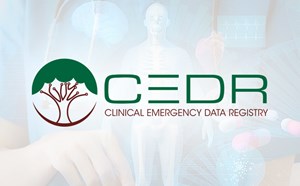
More on 2019 HIMSS
Dispatch from HIMSS19
At an IT conference that is best described in superlatives, the Interoperability Showcase at HIMSS19 does not disappoint. This anchor location at the end of the exhibition floor fills an entire ballroom with 34,000 square feet of displays from 85 vendors celebrating Interoperability. I had the opportunity to visit the Showcase during HIMSS19. The goal of the showcase is to highlight real world situations where interoperability improves the triple aim.
Half the room is devoted to twenty use case displays. Think human dioramas with 8 to 10 different companies working through a particular scenario and how the participating vendors can share data (usually unilaterally) in support of a mission. I stood through the Acute Care presentation that centered around a 55-year-old male with ischemic cardiomyopathy and decompensated CHF who lives in a remote, rural location. Vidyo is the platform that mediates the telehealth visit from the home to the cardiologist. After the video visits between the cardiologist, patient, and his daughter, the virtual patient was directed to a freestanding emergency department (FSED). What followed I can only describe as a stretch of the imagination. The ED doc and the cardiologist engage in a video conference where they review the patient’s echo and EKG from a year ago, and the FSED’s EKG from this morning. Frankly, I felt a little miffed when they said that the cardiologist decided the patient needed to be transferred to the university medical center as a direct admit. It would have only been more condescending if the cardiologist read the EKG for the ED doc. However, I digress.
The patient was transferred, and all the nuts and bolts were glossed over. Perhaps AI – one of the buzzwords of 2019 - would take care of the tedious bits. Once in the ICU, the Baxter pump was programmed by the EPIC CPOE order (pretty cool, and pro-safety). Masimo demonstrates a DOC (Device Output Coordinator) that serves as single visualization point for the ICU’s IoT environment (vent, invasive and non-invasive monitoring, with both machine and CDS alerts). There was a final transition back home where home monitoring devices were integrated as the patient’s CHF was re-compensated. Overall, it was a good example of how various entities that may not be working within the same system could interact.
There were 20 use cases on display, with each cycling every 15 minutes or so. Most did not impact our emergency medicine lane. There was one following a pediatric cancer diagnosis from PCP to the tertiary referral center. Another one focused on childhood health involving the school nurse. A use case that I wish I had time to see concerned opioid use and illustrated how cooperation among various actors could lead to better outcomes. In addition to the use case demonstrations, there is a theatre space for presentations and meetings. The other half of the Showcase was the product marketplace featuring 85 vendors with active solutions in this space.
Given the CMS rules that dropped in February 2019 concerning interoperability, I predict that the discussion on data sharing is not closed. Rather, we saw recurring themes of Application Programming Interface (API) use, Fast Healthcare Interoperability Resources (FHIR), and consumer directed data exchange. In addition, the social determinants of health came up repeatedly in the educational sessions. Next year’s HIMSS conference will be in Orlando, Florida from March 9th through 13th, 2020.
Michael Lozano Jr., MD, MSHI, FACEP
Affiliate Assistant Professor,
Morsani College of Medicine, University of South Florida
Senior VP, Envision Physician Services



